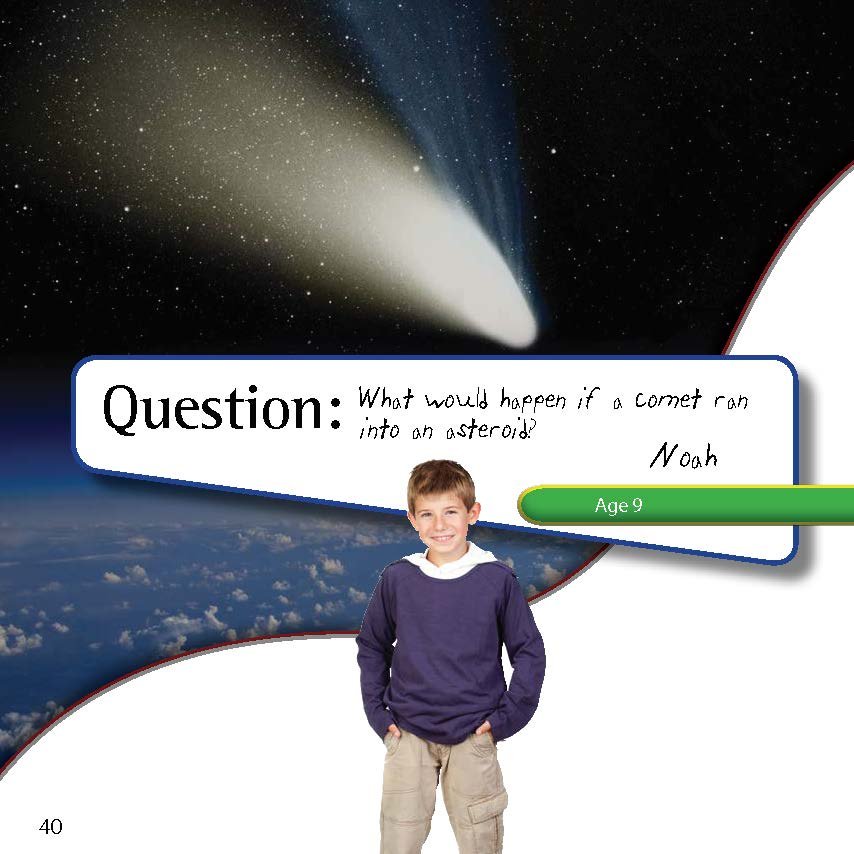What Would Happen If A Comet And Asteroid Collided?
Chapter 19
on August 21, 2017
Answer:
For since the creation of the world His invisible attributes are clearly seen, being understood by the things that are made, even His eternal power and Godhead, so that they are without excuse. (Romans 1:20)

Genesis 1:14
Comets are made mostly of dust, rock, and ice, while asteroids are primarily made of rock. A snowball hitting a rock might be similar to what it would be like if a comet hit an asteroid at high speed. The frozen water on a comet vaporizes when the comet nears the sun and makes a comet tail that points away from the sun (called a “coma”). This would make it easier for a comet to break apart than an asteroid. So the comet, depending on the size, would likely be the one that broke up more.
Interestingly, NASA had a mission to smash into a comet. The comet, Tempel 1, was a city-sized comet that was discovered in 1867 by Ernst Tempel. It orbits the sun every 5.5 years. NASA decided to collide an object into it called an “impactor” the size of a small desk that weighed 820 pounds (370 kg.)! This impactor was monitored by a spacecraft called Deep Impact to get a glimpse of what was below the surface of the comet.
Many researchers on this mission were hoping to learn a little more about “an evolutionary history” instead of the true history in the Book of Genesis. God’s creation is incredible to explore!
The Answers Book for Kids: Volume 5
Have questions about space and astronomy? Find answers to 20 common questions asked by kids in this book!
Browse Kids Book- © 2025 Answers in Genesis
- Privacy Policy
- Contact
- About

